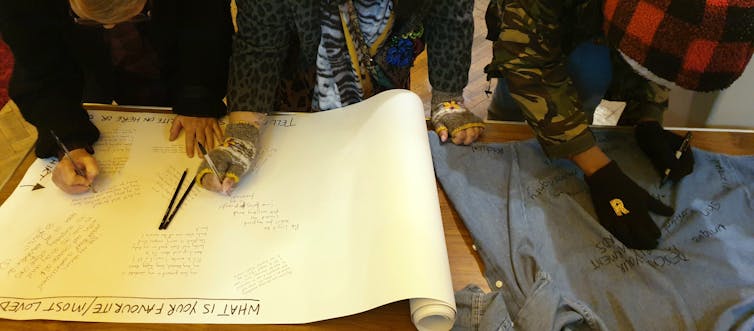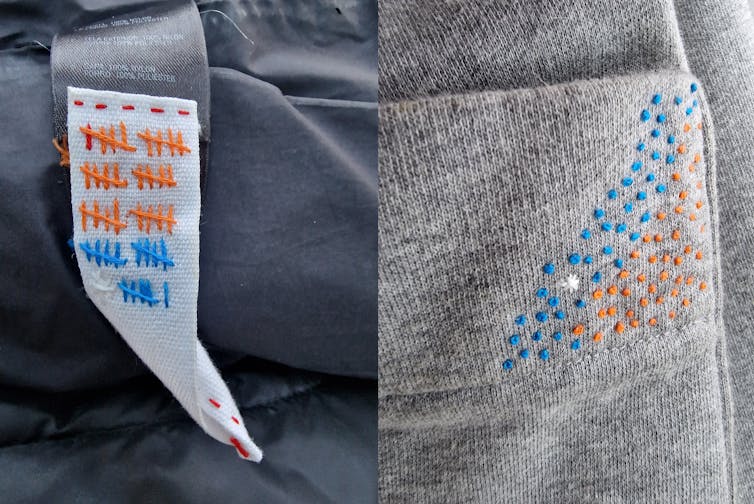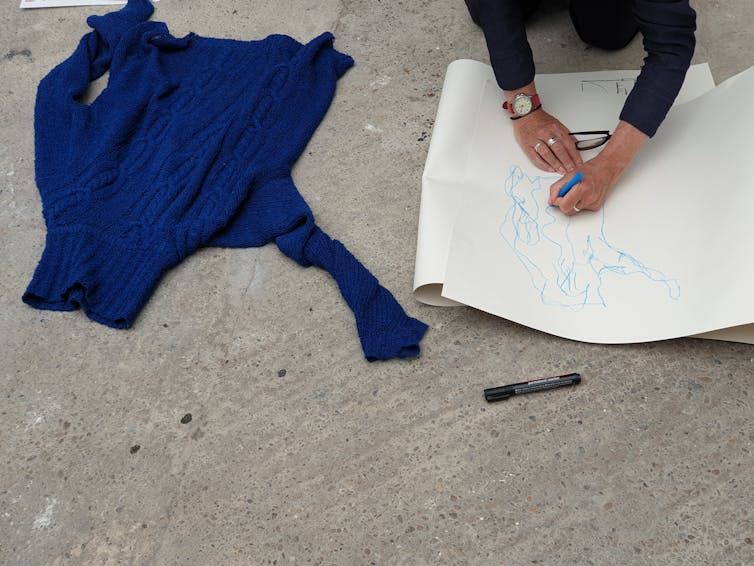
Think about the clothes you are wearing right now. How long have you had them? How often do you wear them? Like me, you’re probably wearing favourites that you always reach for, despite having a wardrobe stuffed with rarely worn clothes.
But still, you might feel the irresistible urge to buy more. In high-income countries, overconsumption of clothing contributes to the climate crisis throughout the accelerating cycle of fashion, from production and distribution to mountains of barely worn clothing waste. It might be true that the most sustainable clothes are the ones we already own, but has the industry convinced you that’s boring?
Caring about what’s inside your wardrobe, while resisting the urge to buy more clothes, might be more fun than you think. As part of my PhD research into what our relationships with our clothes might mean for sustainability in fashion, I’ve been experimenting with these simple and positive ways to reconnect with clothing:
1. Put pen to paper
In 2018, campaign group Fashion Revolution encouraged supporters to write a love story about their most-loved garment. Writing about your clothes can uncover personal stories, gaps in your knowledge and a deeper understanding of why you wear what you wear.
Wendy Ward, Author provided (no reuse)
I have written poems about some of my clothes and started to write break-up letters to each garment that leaves my wardrobe. It’s a mindful process that reminds me of places I’ve been and people I’ve met in a much more vivid way than scrolling through photos on my phone.
A recent break-up letter to a rarely worn jacket helped me to pinpoint exactly why I wasn’t wearing it, and hopefully will ensure I don’t repeat the same mistake.
Whenever I have invited people to write about their clothes, either at public events or during workshops that form part of my PhD, I’ve been surprised by how willingly they share their stories and the positive actions the writing has inspired. Some people have talked about digging garments out of wardrobes to be worn again and others have found better ways to dispose of unwearable clothes.
2. Daily stitches
On average, each person wears just 74% of their wardrobe and a recent report suggested a wardrobe size of just 85 items in order to limit carbon emissions and stay within 1.5°C warming.
Curious about the size of my own wardrobe, I did a thorough check and counted 205 garments. I began to log which ones I wear by hand sewing a stitch into each garment worn that day, using a different colour thread each season to create a visual marker.

Wendy Ward, Author provided (no reuse)
At a glance, I can see which garments I’m wearing, how regularly and at which times of the year. I can more easily decide which clothes to keep, know where the gaps are in my wardrobe and choose the clothes I can part with.
This is just one form of wardrobe tracking, an activity that’s gaining popularity in digital form with apps and online campaigns that help people to track their wearing habits.
3. Wardrobe portraits
Making drawings of my clothes helps me notice overlooked details and understand what a garment means to me on a personal level.
While drawing one recent picture of a favourite jacket, the fluff of a forgotten jumper caught in the velcro reminded me to wear that jumper again. Ond once, carefully mapping the creases in a pair of leather gloves that used to be my dad’s, I noticed how the leather had moulded to the shape of his hands and I feel like he’s holding my hands whenever I wear them.

Wendy Ward, Author provided (no reuse)
Drawing has long been used to study historical finds and museum collections, often exposing undocumented details. But if drawing isn’t your thing, most of us have a camera in our pocket. Take a beautiful photograph of your favourite garment or document your fashion revelations on Instagram.
At a garment drawing workshop I hosted in 2022 in the testing phase of my PhD, the small group of volunteers shared stories and noticed new things about their clothes that had previously been overlooked. Some suddenly saw the potential for easy repairs that could make a garment wearable again.
What’s the point of a slowly crafted, organic, recycled garment if nobody wants to wear, keep and love it? Perhaps reconnecting with unworn clothes lurking at the back of your wardrobe could inspire you to wear them again or let them go to someone else while freeing up some much-needed storage space. The key to sustainable fashion could already be inside your wardrobe.



